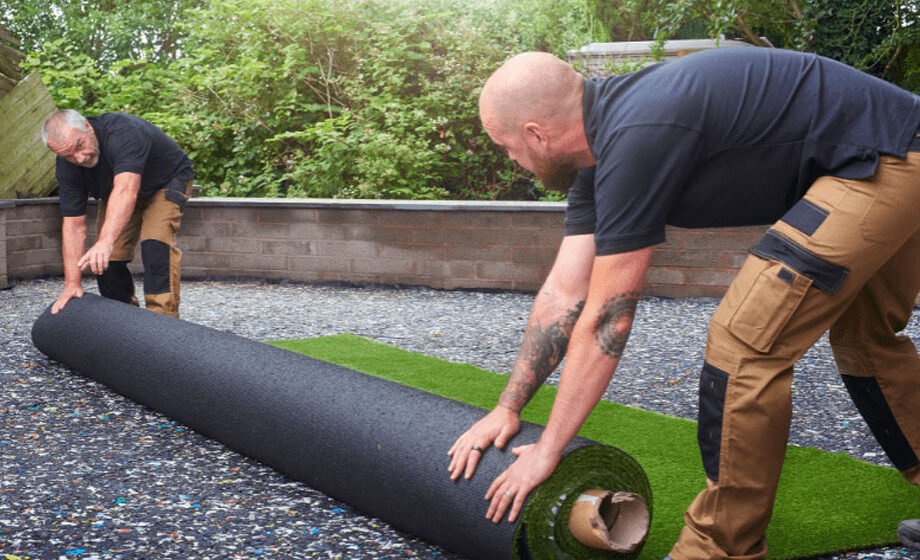Artificial turf provides a low-maintenance and aesthetically pleasing alternative to natural grass. While the vibrant green surface catches the eye, several layers are underneath, each playing a specific role. This unseen part of the artificial grass is a meticulously designed system that enhances its functionality and longevity. Here is a closer look at what goes underneath synthetic grass:
Base Preparation
The journey to installing high-performing artificial turf begins with thorough base preparation. This stage involves removing all existing vegetation and debris from the designated area. Once this is done, the ground is leveled to create an even, firm surface. During this process, installers pay special attention to any slopes, as they play a role in future drainage system design. Careful base preparation is the first step in creating a sturdy foundation for the artificial grass, setting the stage for the following layers.
Sub-Base Installation
Following base preparation, the next step is installing an aggregate base. This layer can be crushed stone or gravel, compacted to form a firm yet permeable bed. The thickness of this layer tends to vary depending on the intended use of the turf. Sports fields may require a thicker base compared to residential lawns. This layer aids in providing stability to the artificial grass, making sure it remains intact despite heavy usage.
Drainage System
Proper drainage helps to prevent water from pooling on the turf. The drainage system is designed to efficiently direct water from the turf, preventing waterlogging and potential damage. This can be done using a perforated pipe installed beneath the sub-base to channel water away from the surface. While the permeability of the aggregate base aids in drainage, additional measures such as installing drains or sloping the base may be necessary. These measures depend largely on the location and climate conditions of the area.
Shock Pad
A shock pad or form underlayment is added above the aggregate base in certain applications. This layer provides additional cushioning, enhancing safety and comfort underfoot. This is beneficial for playgrounds or sports fields where falls are more common. The shock pad or form underlayment improves the feel of the turf and contributes to reducing injuries.
Weed Barrier
A weed barrier is often installed atop the sub-base to prevent weeds from growing through the turf. This fabric barrier is installed directly above the aggregate base or shock pad. Adding a weed barrier reduces maintenance efforts, making sure that the turf remains aesthetically pleasing without the need for constant upkeep.
Infill Material
After the weed barrier is in place, infill material is added. This can be sand, rubber crumb, or a combination of both. The infill supports the turf blades, helping them stand upright for a more natural appearance. It also adds weight to the turf, keeping it securely in place even during heavy use.
Turf Installation
The synthetic grass is installed above the infill material. Installation involves rolling out the turf, trimming it to fit the area, and securing it with nails or glue. The infill is then brushed into the turf, filling the gaps and completing the installation. This final layer brings together all the previous layers, resulting in a durable and visually appealing surface.
Understand the Layers Beneath Your Artificial Turf
The unseen layers beneath the artificial turf serve a specific purpose, contributing to your synthetic grass’s functionality and longevity. From the initial base preparation to the final infill, each layer plays a role in enhancing the turf’s performance, durability, and aesthetic appeal. So, remember to dig deeper and know what goes underneath your artificial grass. Contact a professional turf installer today and learn more about the installation process and the importance of each layer beneath the turf.

